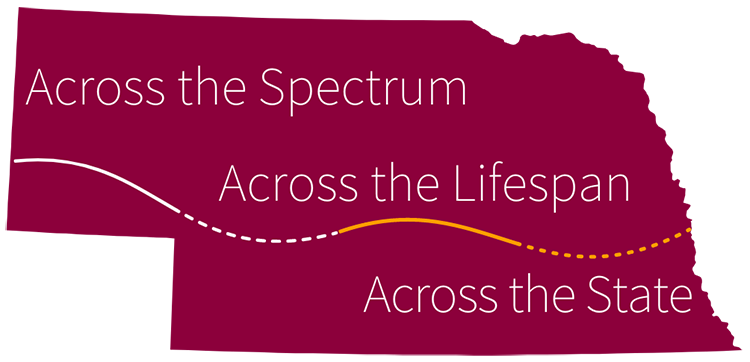Overview
When family members or support providers become concerned that a child is not following a typical developmental course, they turn to experts, including psychologists, educators and medical professionals, for a diagnosis.
At first glance, some people with Autism may appear to have an intellectual disability, sensory processing issues, or problems with hearing or vision, and the diagnosis of Autism may become more challenging.
These conditions can co-occur with Autism and it can be confusing to families when they receive multiple diagnoses. However, it is important to identify Autism, as an accurate and early Autism diagnosis can provide the basis for appropriate educational and home-based support.
There are many differences between a medical diagnosis and an educational determination, or school evaluation, of a disability.

The advantages of early intervention cannot be overemphasized. Children who receive early intervention can make tremendous strides in their overall skill development, leading to improved quality of life.
The CDC provides a wealth of information on the early signs of Autism through its “Learn the Signs. Act Early” initiative. While there is no one behavioral or communication assessment that can detect Autism, several screening instruments have been developed for use in determining if a child might need further evaluation for developmental delay and/or Autism, including the Ages and Stages Questionnaire (ASQ) and the Modified Checklist for Autism in Toddlers (M-CHAT). For detailed information about these instruments and the research behind them, click here.
A medical diagnosis is made by a psychologist, developmental pediatrician, or other specialized physician based on an assessment of symptoms and diagnostic tests. A medical diagnosis of Autism spectrum disorder is most frequently made according to the Diagnostic and Statistical Manual (DSM-5, released 2013) of the American Psychiatric Association. This manual guides physicians in diagnosing Autism spectrum disorder according to a specific set of criterion.
A brief observation in a single setting cannot present a true picture of someone’s abilities and behaviors. The person’s developmental history and input from parents, caregivers and/or teachers are important components of an accurate diagnosis.
While there is not a single behavioral or communication test that can detect Autism, several Autism-specific tools are now being used for formal diagnosis. These include the Autism Diagnostic Observation Schedule, Second Edition (ADOS™-2), the Autism Diagnostic Interview (ADI), the Screening Tool for Autism in Toddlers (STAT), the Childhood Autism Rating Scales (CARS), and the Tele-ASD-Peds for diagnosis for use in telehealth. All of these tests should be used as part of a larger assessment, and not just on their own, as the determination of Autism is best completed with multiple sources of information.
An educational identification is made by a multidisciplinary evaluation team of various school professionals. The evaluation results are reviewed by a team of qualified professionals and the parents to determine whether a student qualifies for special education and related services under the Individuals with Disabilities Education Act (IDEA) (Hawkins, 2009).
An educational identification can qualify an individual for support within school settings. However, an educational identification is not the same as a medical diagnosis, and often will not qualify an individual for therapies and support outside of school that would typically be covered by insurance or Medicaid. Additionally, a medical diagnosis of Autism does not guarantee an educational determination.
For more questions contact your local school district special education department.




